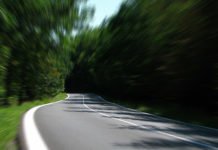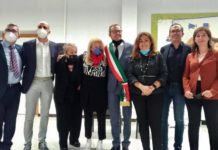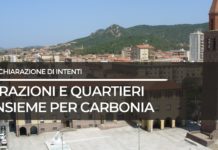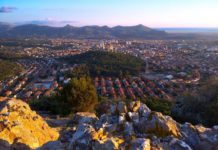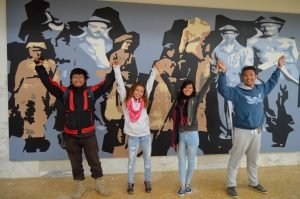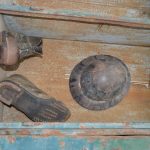Durante Monumenti Aperti 2016, abbiamo avuto il piacere di ospitare in città due ragazzi indonesiani, Daniel Banondes e Reza Noegraha, e due ragazze filippine, Rona Liza Inocencio e Tara Lee Parvus, in Sardegna perché ospitati per fare job shadowing e servizio volontario europeo dall’associazione TDM 2000 grazie al progetto From Europe to Asia: capitalizing experience in youth work.
Una di loro, Rona, ha accettato di scrivere le sue impressioni per il nostro blog. Di seguito la versione originale in Inglese e la relativa traduzione in Italiano.
Grazie Rona per il tuo contributo!
Carbonia in the eyes of Filippina
It’s my fourth weekend in Cagliari! What better way to explore Sardinia than to go out of the City? Our destination? Carbonia! You probably have guessed why it was named after a familiar element.
The name Carbonia is the Italian word for COAL, a resource that is abundant in this regi on.
on.
The travel time from Cagliari to Carbonia will take one hour so have your favorite playlist ready. Sing along with your friends to add up to the fun! Along the way, you will see beautiful landscapes and herd of sheep! An animal we mostly see only in foreign movies in the Philippines.
Our tour started with visiting the Museo del Carbone. We were led by our tour guide named Loredana who speaks English very well. Before it became a museum, this place employed 18,000 people, almost 80% of them worked as miners. It opened in 1937 and was functional until 1964. It occupied an amazing 33 hectares on the surface and 100 km of underground chambers.
Stepping down the tunnel is like travelling backwards to the time where it was filled with workers. The miners were given metal name tags and numbers to ensure the right people with the right count are inside working. Despite the hard work (mostly using only hands and basic tools), the job offered hope to the people to send their children to school and sustain their daily lives. These people came from different regions in Italy.
 Wear you protective helmet underground and have a little taste of a miner’s life. As you go along the way, you will see photos, video clips, and different tools that evolved from the year the mine was opened till it was closed. The tour is accompanied by sounds like someone else is working to make it more authentic. It’s worth the euros you pay to enter since your senses will be enhanced with audio and visual exhibits. If you think about it, we are just too blessed to be born where we didn’t have to work in the mine to survive. Salute to the people in the past, their sacrifices not only sustained their lives and their family but also nourished the present by allowing us to understand their sacrifices. The initiative to turn this place to something educational is more than just amazing. Up in the Lamp gallery, you will see more interesting stuffs like old bicycles, documents, miner’s soap and shower area. To the people working in the Coal Museum, thank you for educating both the locals and the tourists since November 3 2006. Buona idea!
Wear you protective helmet underground and have a little taste of a miner’s life. As you go along the way, you will see photos, video clips, and different tools that evolved from the year the mine was opened till it was closed. The tour is accompanied by sounds like someone else is working to make it more authentic. It’s worth the euros you pay to enter since your senses will be enhanced with audio and visual exhibits. If you think about it, we are just too blessed to be born where we didn’t have to work in the mine to survive. Salute to the people in the past, their sacrifices not only sustained their lives and their family but also nourished the present by allowing us to understand their sacrifices. The initiative to turn this place to something educational is more than just amazing. Up in the Lamp gallery, you will see more interesting stuffs like old bicycles, documents, miner’s soap and shower area. To the people working in the Coal Museum, thank you for educating both the locals and the tourists since November 3 2006. Buona idea!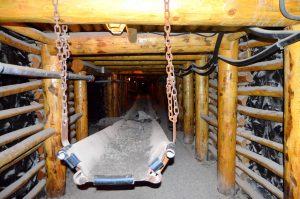
It was also Monumenti Aperti in the City of Carbonia that day, so we proceeded with visiting two more interesting spots.
Campanile (bell tower) is the symbol of the city with the height of 44.70. Beautifully built with hard work, it’s the perfect spot for photos but more importantly of faith. Inside is a unique staircase that leads to the huge bells and perfect panoramic view of the city.
Rifugio antiaereo is also walk away from campanile, rectangular in shape, this bomb shelter can accommodate 45 people. Inside, you will feel safe. Strong in structure, you will feel lucky that this one survived World War II. Interesting refuge!
Carbonia is a home of warm people, beautiful landscapes, museums, and rich in history. If you happen to go to Sardinia, put Carbonia on your list, trust me, it’s worth a visit! Espresso is best after the tour.
Traduzione
È il mio quarto fine settimana a Cagliari! Quale modo migliore per esplorare la Sardegna se non andare fuori città? La nostra destinazione? Carbonia! Probabilmente avete già indovinato perché è stata chiamata così.
Il nome Carbonia deriva dalla parola italiana “carbone”, una risorsa che è abbondante in questa regione.
Cagliari dista un’ora da Carbonia quindi tenete pronta la playlist preferita. Cantare con i tuoi amici aumenterà il divertimento! Lungo la strada,potrai vedere splendidi paesaggi e greggi di pecore! Un animale che noi nelle Filippine vediamo solo nei film stranieri. 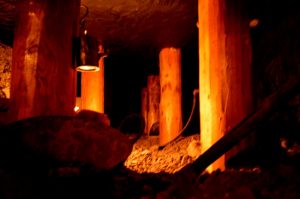
Il nostro tour è iniziato con la visita del Museo del Carbone. Siamo stati accompagnati dalla nostra guida turistica di nome Loredana che parla inglese molto bene. Prima di diventare un museo, questo luogo impiegava 18.000 persone, di cui quasi l’80% come minatori. Ha aperto nel 1937 ed era in funzione fino al 1964. Occupava incredibilmente 33 ettari sulla superficie e 100 km di gallerie sotterranee.
Scendere nelle gallerie è come viaggiare a ritroso nel tempo e tornare a quando questi spazi erano occupati dai lavoratori. Ai minatori venivano date delle targhette di metallo e dei numeri per garantire che il numero giusto di persone stesse lavorando all’interno. Nonostante il duro lavoro (per lo più utilizzando solo le mani e strumenti di base), l’impiego offriva ai minatori la speranza di mandare i loro figli a scuola e sostenere la loro vita quotidiana. Questi lavoratori provenivano da diverse regioni d’Italia.
 Indossa il casco protettivo nella galleria sotterranea e goditi un piccolo assaggio della vita di un minatore. Procedendo lungo la strada, vedrete le foto, clip video e diversi strumenti di lavoro nella loro evoluzione a partire dall’anno in cui la miniera è stata aperta fino alla chiusura. Il tour è accompagnato da suoni in sottofondo come se qualcun altro stesse lavorando per rendere la visita ancora più autentica. La visita vale il costo del biglietto che si paga in quanto i vostri sensi saranno stimolati con audio e mostre fotografiche. Se ci pensate, noi stiamo stati fortunati ad essere nati dove non abbiamo dovuto lavorare in miniera per sopravvivere. Rendiamo onore ai lavoratori del passato, il loro sacrificio non solo ha sostenuto la loro vita e la loro famiglia, ma anche nutre il presente, consentendoci di comprendere i loro sacrifici. L’iniziativa di trasformare questo posto per qualcosa di istruttivo è più che stupefacente. Nella lampisteria si possono vedere oggetti interessanti come vecchie biciclette, documenti, sapone e la zona doccia dei minatori. Alle persone che lavorano nel Museo del carbone, grazie per istruire sia gli abitanti del luogo che i turisti dal 3 novembre 2006. Buona Idea!
Indossa il casco protettivo nella galleria sotterranea e goditi un piccolo assaggio della vita di un minatore. Procedendo lungo la strada, vedrete le foto, clip video e diversi strumenti di lavoro nella loro evoluzione a partire dall’anno in cui la miniera è stata aperta fino alla chiusura. Il tour è accompagnato da suoni in sottofondo come se qualcun altro stesse lavorando per rendere la visita ancora più autentica. La visita vale il costo del biglietto che si paga in quanto i vostri sensi saranno stimolati con audio e mostre fotografiche. Se ci pensate, noi stiamo stati fortunati ad essere nati dove non abbiamo dovuto lavorare in miniera per sopravvivere. Rendiamo onore ai lavoratori del passato, il loro sacrificio non solo ha sostenuto la loro vita e la loro famiglia, ma anche nutre il presente, consentendoci di comprendere i loro sacrifici. L’iniziativa di trasformare questo posto per qualcosa di istruttivo è più che stupefacente. Nella lampisteria si possono vedere oggetti interessanti come vecchie biciclette, documenti, sapone e la zona doccia dei minatori. Alle persone che lavorano nel Museo del carbone, grazie per istruire sia gli abitanti del luogo che i turisti dal 3 novembre 2006. Buona Idea! 
C’era anche Monumenti Aperti nella città di Carbonia quel giorno, quindi abbiamo visitato due luoghi interessanti.
Il Campanile è il simbolo della città, con l’altezza di 44.70 metri. Splendidamente costruito con il duro lavoro, è il luogo ideale per le foto, ma soprattutto è un luogo di fede. All’interno si trova una scala unica che conduce alle enormi campane e alla perfetta vista panoramica della città.
Il Rifugio antiaereo si raggiunge a piedi dal Campanile, di forma rettangolare, in grado di ospitare 45 persone. Al suo interno, vi sentirete sicuri. Forte nella struttura, vi sentirete fortunati che questo è sopravvissuto alla seconda guerra mondiale. Rifugio interessante!
Carbonia è un luogo con gente accogliente, bei paesaggi, musei e ricca di storia. Se vi capita di andare in Sardegna, mettere Carbonia sulla vostra lista, credetemi, ne vale la pena! Un caffè espresso è la cosa migliore dopo il tour.


